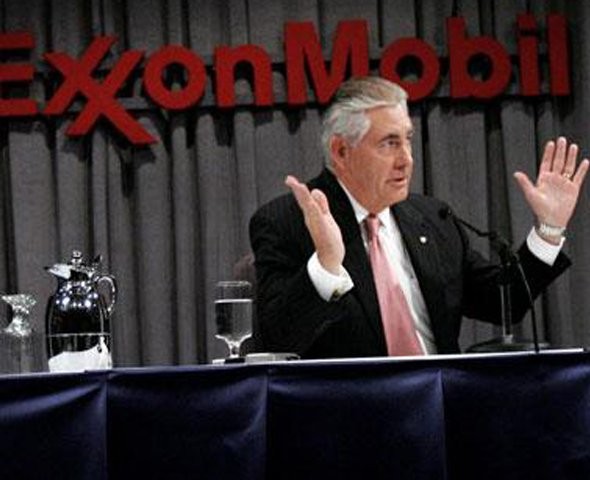10 Interesting and LittleKnown Facts About the S P 500
Post on: 10 Июль, 2015 No Comment

Make no mistake about it: The U.S. stock market’s most iconic and prolific stock market index is the Dow Jones Industrial Average ( DJINDICES: ^DJI ). Formed in February 1885, this original index of 14 stocks, which has since been expanded to include 30 multinational behemoths that are as representative as possible of the American economy, has come to symbolize both opportunity and wealth within the United States.
However, to modern-day investors it’s also come to represent an archaic instrument of the past that’s based on a stock’s per-share price rather than its market value — adding significantly weighting to components like IBM. which is valued at nearly $188 a share, and minimal importance to aluminum producer Alcoa. which is a touch over $8 a share. Furthermore, the Dow simply isn’t nimble enough to encompass all of today’s rapidly changing global industries.
Instead, investors today look to the S&P 500 ( SNPINDEX: ^GSPC ) for the best indication as to the health of the overall stock market and economy. The S&P 500 combines 500 selected companies into a market value (not share price) weighted index to give investors the best possible view of the true state of the U.S. stock market.
With this in mind, I propose to share with you 10 interesting and little-known facts about the S&P 500 that I’ve come across over the years as an investor. While some of these facts are merely interesting and fun, others can provide insight that can potentially make us better investors.
No. 1: I don’t think you can discuss interesting facts about the S&P 500 without first discussing what the inclusionary factors are that allow a company to be included in the index. According to S&P Indices as of June 2012, eligibility requirements included a market capitalization of $4 billion or greater, an annual dollar value traded to float ratio of 1.00 or greater, an average volume of 250,000 or more shares for a period of six months before its evaluation date, and being based in the United States. In other words, established and highly liquid U.S. companies in excess of $4 billion in market value.
No. 2: The life span of a stock within the S&P 500 tends to be relatively short, all things considered. While there are numerous companies that have been around for decades, between the period when the S&P 500 index was officially formed in 1957 to its 50th anniversary in 2007, only 86 of the original 500 companies still remained. The other 414 had either gone bankrupt, been taken over, or been removed from the index. In that 50-year span, nearly 1,000 companies had been, at some point, added to the index.
Furthermore, calculations by noted Prof. Jeremy Siegel of the Wharton School demonstrate that purchasing each original company and holding them for those 50 years (included those that went through bankruptcy, buyout, or index removal) as compared with just buying an index fund would have netted you a better return of 88 basis points per year. That might not sound like a lot, but if you invested $1,000 in each strategy in 1957 you’d have made $84,000 more with the individual buy-and-hold strategy than with a straight index fund purchase. Let this be another reminder that buying and holding solid companies at reasonable prices is still the way to go for a happy retirement.
No. 3: In spite of the historical success of buy-and-hold investing, the allure of trading S&P 500 patterns does indeed get the better of some traders. With that being said, eight out of 12 months since 1971 have resulted in gains for investors. December and November are historically the S&P 500’s best months, with average returns of 1.7% and 1.5% since 1971 with September (not October despite popular belief) proving to be its worst-performing month historically, down 0.52%. Keep in mind, though, that trying to time the market based on these statistics has rarely worked out over the long run.
No. 4: Speaking of streaks and interesting patterns, since 1928 the S&P 500 has had more than 50 instances where it’s advanced at least eight days in a row. That figure drops to just 40 instances if the criterion is for a nine-day winning streak. In fact, the last time the S&P 500 has seen more than a nine-day winning streak is all the way back in 1995, despite the fact that it’s happened more than 20 times in history. By now I’m pretty sure you’re curious about what the longest winning streak ever has been for the S&P 500. I was, too, and discovered that the answer is 14 days in a row, set back in April 1971.
No. 5: Extrapolated back to 1929, the S&P 500 has had some pretty volatile years. According to historical data, the S&P 500’s biggest annual percentage gain of 45.02% occurred in 1954, while its worst annual performance ever was more recent in 2008 at negative 38.49%. Although these figures may appear notoriously close, buying and holding through all of the S&P 500’s peaks and troughs has resulted in an average annual return in excess of 10%. Can I once again get three cheers for buy-and-hold ?
No. 6: It’s no secret that the ability to look up data via the Internet and make trades with a self-service broker has completely transformed the investing landscape. Although we all know this to be the truth, I haven’t before been able to locate specific data to encompass the magnitude of this change — until now.
According to data available via Yahoo! Finance and the CFA Institute, the 1950s saw some 5.78 billion shares cumulatively traded in the S&P 500. With the 1990s came the advent of the Internet and the rise of the online brokerage firm, causing trading volume in the decade to soar to a cumulative 1.2 trillion shares. However, trading really took off in the 2000s, with more nearly 7.1 trillion shares exchanging hands and the average daily trading volume nearly equaling all of the shares traded in the entire 1950s! Last year saw the 10 trillionth share traded in the S&P 500 since data record-keeping began in January 1951.
No. 7: However, building along the share volume figures we just looked at, there has developed a negative correlation between volume frequency and rising prices over the past decade and a half. In other words, in the 1950s through the 1990s, there was a direct correlation between rising trading volume and rising prices. Since roughly 2000, though, that trend has reversed, with trading volume tapering off on rallies and increasing during market downdrafts. I believe this provides even more evidence that the Internet’s ability to supply real-time information has transformed what would have been buy-and-hold investors in the past into traders that are attempting to time the markets’ next move today.
No. 8: Volume and large performance swings aren’t the only metrics within the S&P 500 that have seen gigantic swings over its long history. According to data extrapolated backwards to 1870 by Robert Shiller in his book Irrational Exuberance. the S&P 500’s average price-to-earnings ratio is a modest 15.5. The lowest P/E ever recorded based on Shiller’s data was 5.31 and occurred near the end of World War I. It’s not hard to understand why, as the uncertainty of war tends to divert government and corporate funds away from economic stimulating factors and toward territorial defense.

Source: Robert Shiller, Irrational Exuberance .
On the other hand, the highest P/E ever recorded occurred during the recent financial meltdown (May 2009), reaching an astronomic level of 123.79. Considering that even the worst recession in 70 years didn’t send the cumulative S&P 500 into EPS loss territory, it’s a testament to the strength and diversity of the index.
No. 9: Can you believe that at no time in the S&P 500’s storied history has a stock ever reached $1,000 per share? Current S&P 500 component priceline.com ( NASDAQ: PCLN ). which specializes in delivering online hotel and travel booking deals to consumers, hit an intraday high of $994.98 per share on Friday, after releasing better-than-expected second-quarter results Thursday night and looks to be in line to become the S&P 500’s inaugural four-digit member.
No. 10: Finally, even though the S&P 500 is a far more encompassing index in that it incorporates 500 businesses across a myriad of industries and doesn’t fault them based on their share price, it’s still liable to be overly influenced by the nation’s largest companies. Apple ( NASDAQ: AAPL ). for example, is the largest component in the S&P 500, with a market cap of nearly $413 billion. By comparison, for-profit educator Apollo Group ( NASDAQ: APOL ) has a market value of just $2.3 billion. In other words, Apple’s effect on the S&P 500 is going to be more than 180 times as great as that of Apollo Group.
What’s truly unfortunate is that millions of Americans have waited on the sidelines since the market meltdown in 2008 and 2009, too scared to invest and put their money at further risk. Yet those who’ve stayed out of the market have missed out on huge gains and put their financial futures in jeopardy. In our brand-new special report, Your Essential Guide to Start Investing Today , The Motley Fool’s personal finance experts show you why investing is so important and what you need to do to get started. Click here to get your copy today — it’s absolutely free.
Fool contributor Sean Williams has no material interest in any companies mentioned in this article. You can follow him on CAPS under the screen name TMFUltraLong. track every pick he makes under the screen name TrackUltraLong. and check him out on Twitter, where he goes by the handle @TMFUltraLong .
The Motley Fool owns shares of, and recommends, Apple and priceline.com. It also owns shares of IBM. Try any of our Foolish newsletter services free for 30 days. We Fools don’t all hold the same opinions, but we all believe that considering a diverse range of insights makes us better investors. The Motley Fool has a disclosure policy .














